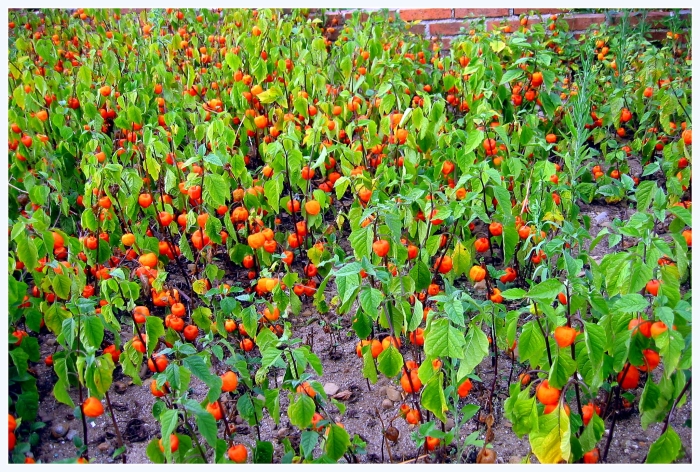Cape Gooseberry
(Physalis peruviana)
Cape Gooseberry (Physalis peruviana)
/
/

manuel m. v.
CC BY 2.0
























































Estimated Native Range
Summary
Cape Gooseberry thrives in annual average temperatures from 13–18 °C (55–64 °F), tolerating up to 30 °C (86 °F). It is suited to Mediterranean climates and is hardy to USDA zone 8, where it may be damaged by frost. This plant prefers full sun or partial shade and grows best in well-drained sandy loam. It requires medium amounts of water and can tolerate a wide range of rainfall from 800–4,300 mm (31–169 in). While it can be grown from seeds, they have low germination rates; thus, propagation from year-old stem cuttings is recommended for earlier flowering and better yields. However, plants grown from cuttings are generally less vigorous than seed-grown plants. In cultivation, it can be used as an ornamental plant for its attractive lantern-like fruit, or in a fruit garden for its edible berries.CC BY-SA 4.0
Plant Description
- Plant Type: Shrub
- Height: 2-3 feet
- Width: 1-2 feet
- Growth Rate: Moderate
- Flower Color: Yellow
- Flowering Season: Spring, Summer, Fall
- Leaf Retention: Evergreen
Growth Requirements
- Sun: Full Sun
- Water: Medium
- Drainage: Slow, Medium, Fast
Common Uses
Bee Garden, Bird Garden, Butterfly Garden, Edible*Disclaimer: Easyscape's listed plant edibility is for informational use. Always verify the safety and proper identification of any plant before consumption., Low Maintenance, Street Planting
Natural Habitat
Originates from the Andes
Other Names
Common Names: Goldenberry, Peruvian Groundcherry, Peruvian Ground-Cherry, Peruvian-Cherry, Goldenberry, Gooseberry-Tomato, Cape-Gooseberry, Cape Gooseberry, Peruvian Cherry, Andenkirsche
Scientific Names: , Physalis peruviana, Physalis edulis, Physalis chenopodifolia, Physalis puberula, Physalis tuberosa, Physalis tomentosa, Physalis incana, Physalis esculenta, Alkekengi pubescens
GBIF Accepted Name: Physalis peruviana L.